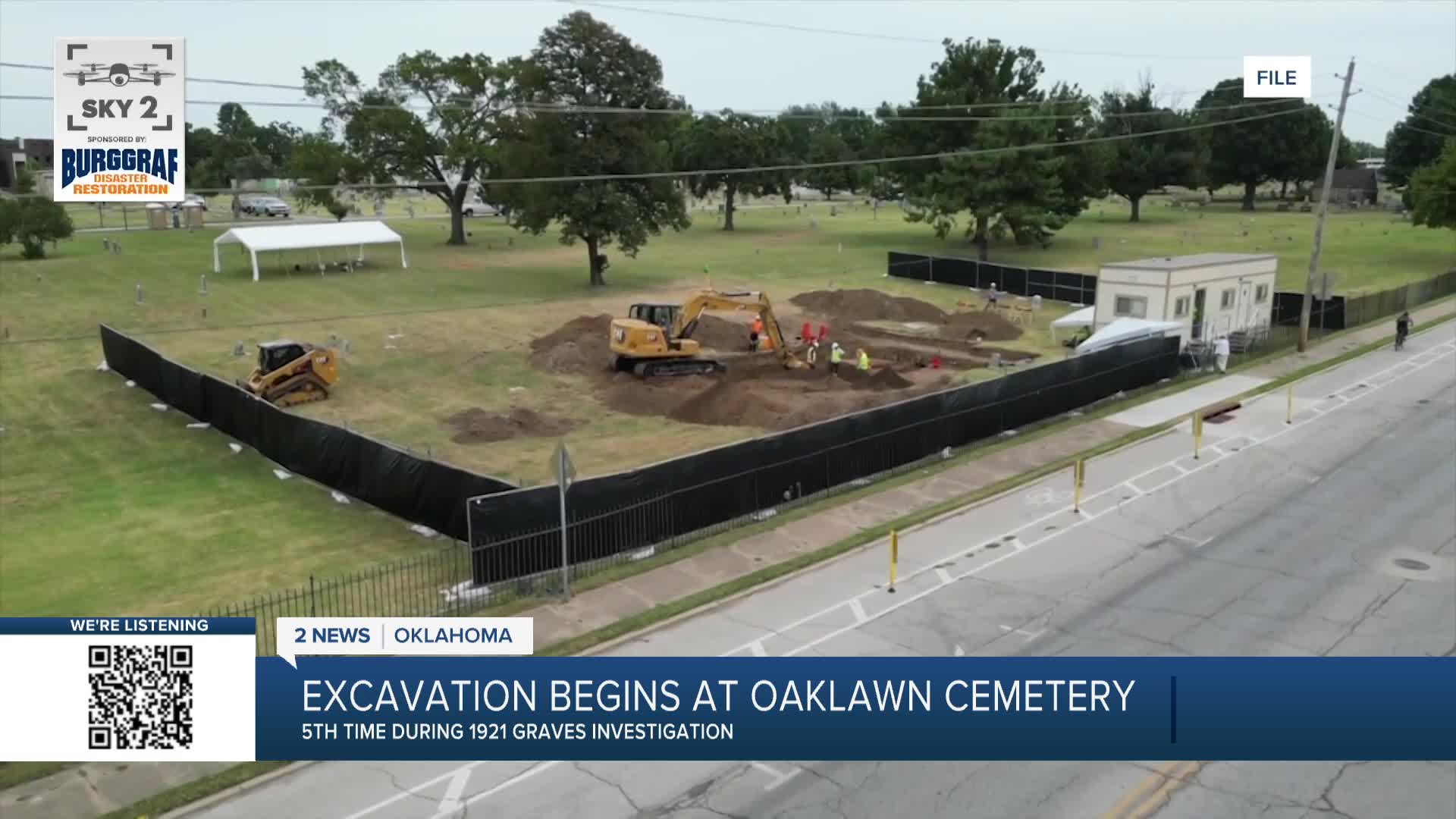TULSA, Okla. — "We may never know how many people died from this atrocity."
Those solemn words from Brenda Nails-Alford, a descendant of survivors of the 1921 Tulsa Race Massacre. In the shadows of the downtown Tulsa skyline, work resumes at Oaklawn Cemetery, the fifth excavation at the site in the 1921 Graves Investigation.
On October 27, field experts and Nails-Alford will be speaking across from Oaklawn Cemetery at 3:30 p.m. to provide an update on the excavations.

Local News
11 EXHUMED: 4th Race Massacre Graves excavation concludes
"This is about bringing closure to families," Mayor Monroe Nichols said at a press conference on October 14. "This is about a community coming together to unite, and in doing so bring closure to this community."
This is the largest excavation effort so far, totaling just over 1,900 square feet on the cemetery's southwest corner. Archaeologist Dr. Kary Stackelbeck laid out the plan.
"This week, we're doing the basic site prep and getting things really rolling," Dr. Stackelbeck said. "And then we're anticipating an additional three weeks worth of hand excavations."
Their work leading to last summer's identification of two known race massacre victims, CL Daniel and George Melvin Gillespie.

Local News
New Tulsa Race Massacre victim identified in 1921 Graves Investigation
Despite that, experts say more can be done.
"We're not close," Dr. Phoebe Stubblefield said. "It is difficult to reconstruct this kind of history. We're still considering other sites to examine."
Dr. Stubblefield says in this Oaklawn excavation, they're looking for male victims in plain caskets, which are caskets without handles. She also mentioned potentially going to other sites in the future. The team explained why that hasn't happened yet.
"The other locations like Newblock Park and so forth, these are locations that have gone through tremendous amounts of land modification in the years since the events in 1921," Dr. Stackelbeck said. "All of which obscures the archaeological record, and makes it very challenging."
So for now, the focus remains on this southwest corner of the Oaklawn Cemetery, and the attempt to unearth some of Tulsa's darkest history.
"These folks are the best in the country at doing what they do," Mayor Nichols said. "For us, it's just following their recommendation on where they believe we can successfully be able to recover folks."
Stay in touch with us anytime, anywhere --
- 2 News Oklahoma on your schedule | Download on your TV, watch for free. How to watch on your streaming device
- Download our free app for Apple, Android and Kindle devices.
- Like us on Facebook
- Follow us on Instagram
- Watch LIVE 24/7 on YouTube





